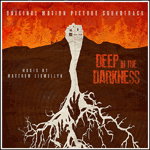
To me there is nothing more satisfying than listening to a new recording for the very first time while reading the liner notes. It is preparing myself for the review that will take place. It is a listening experience where I can truly enjoy the recording with no thoughts of finding the right word or phrase. Listening to the new live recording from Reference Recordings of Bruckner’s Symphony No. 4 is as close to being there as you’ll ever experience. The conductor wrote the liner notes and he explains to the listener what he’ll hear and it makes a difference.
Conductor Martin Honeck chose to perform the version that was premiered in February 1881. It is the 1878/1880 version that was edited by Nowak and one that seems to be a popular choice but keep in mind that there were six other revisions of the work. If you wish to read about them on the net you can find an abundance of information at http://en.wikipedia.org/wiki/Symphony_No._4_%28Bruckner%29. This is the third recording in the live series the other two being Dvorak/Janacek FR710 and Strauss FR707.
The 4th was the only one that Bruckner gave a nickname to “Romantic” not in the sense we think of but the medevial romance that Wagner wrote about in Lohengrin and other works. Wagner and Bruckner were close friends and in this particular work you’ll find little sacred material that you’ll hear in his later symphonies. To put it into a time frame it was around the same time as Mahler’s 1st and Dvorak’s 8th. Honeck says it is “a tone poem in the robe of a symphony?”
The opening movement begins ever so quietly with the horns offering the melody with the strings offering a tremolo background. It quickly increases in intensity with the horns completely taking over. This is followed by a second theme quite sprightly in nature from the woodwinds only to take a backseat to the brass again.
The second movement an andante approaching an allegretto is explained by Bruckner as an “amorous boy sets out to court in front of the window.” It is night and the theme reflects that. Overall this movement is very quiet. There is an overall sadness about it although it does have its uplifting moments.
The third movement, a scherzo, you might recognize as the famous hunting music on a compilation of classical music you might have. Bruckner says “a dance that is played before hunters during their meal.” This movement was entirely recomposed from the original 1874 version. The horns make this a memorable movement that you’ll remember once you hear it.
The final movement begins with a reference to the opening movement and the thunderstorm is on with passages of beauty as well as extreme agitation. The Coda returns to the main theme in a majestic fashion worthy of the alps themselves.
On the very first play you’ll hear that the Pittsburgh Symphony under Honeck’s direction play this work as if they’ve played it a 1000 times. I’ve heard recordings that sound like the orchestra is merely going through the motions but there is no vigor and vibrancy to what they are playing. To make this recording even more incredible is the fact that it’s a live recording done by sound mirror. If you have a blu ray player it will likely have SACD and your listen will be even better. The DSD process is better. With the possible exception of a cough or rattling of some paper, unavoidable in a live recording, it gets gives my highest recommendation. It even comes in the new Super Jewel box which is a definite improvement over the standard CD case. The Pittsburgh has brought a new meaning to this work and I’m certain that Bruckner would approve!






